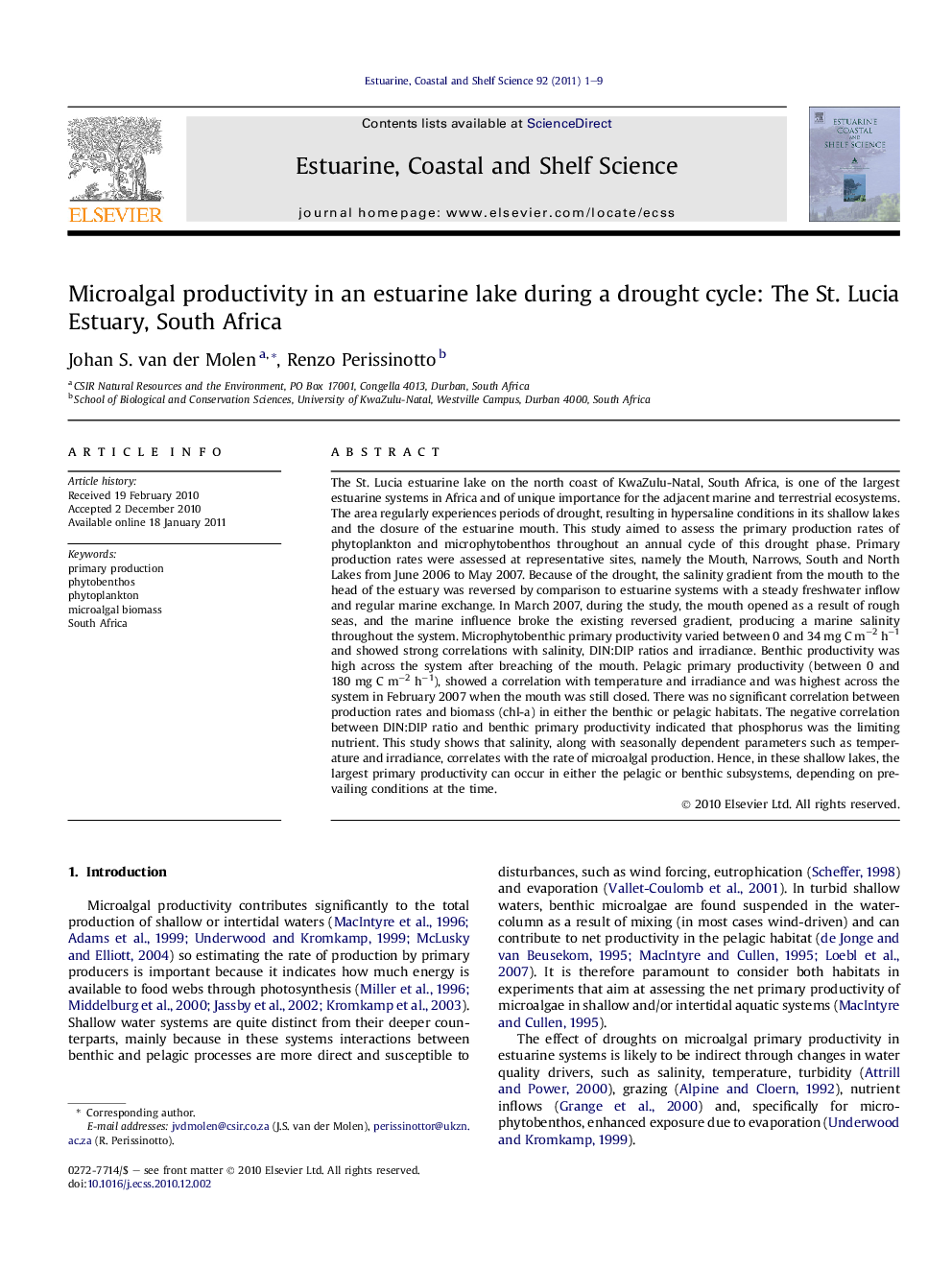| Article ID | Journal | Published Year | Pages | File Type |
|---|---|---|---|---|
| 4540580 | Estuarine, Coastal and Shelf Science | 2011 | 9 Pages |
The St. Lucia estuarine lake on the north coast of KwaZulu-Natal, South Africa, is one of the largest estuarine systems in Africa and of unique importance for the adjacent marine and terrestrial ecosystems. The area regularly experiences periods of drought, resulting in hypersaline conditions in its shallow lakes and the closure of the estuarine mouth. This study aimed to assess the primary production rates of phytoplankton and microphytobenthos throughout an annual cycle of this drought phase. Primary production rates were assessed at representative sites, namely the Mouth, Narrows, South and North Lakes from June 2006 to May 2007. Because of the drought, the salinity gradient from the mouth to the head of the estuary was reversed by comparison to estuarine systems with a steady freshwater inflow and regular marine exchange. In March 2007, during the study, the mouth opened as a result of rough seas, and the marine influence broke the existing reversed gradient, producing a marine salinity throughout the system. Microphytobenthic primary productivity varied between 0 and 34 mg C m−2 h−1 and showed strong correlations with salinity, DIN:DIP ratios and irradiance. Benthic productivity was high across the system after breaching of the mouth. Pelagic primary productivity (between 0 and 180 mg C m−2 h−1), showed a correlation with temperature and irradiance and was highest across the system in February 2007 when the mouth was still closed. There was no significant correlation between production rates and biomass (chl-a) in either the benthic or pelagic habitats. The negative correlation between DIN:DIP ratio and benthic primary productivity indicated that phosphorus was the limiting nutrient. This study shows that salinity, along with seasonally dependent parameters such as temperature and irradiance, correlates with the rate of microalgal production. Hence, in these shallow lakes, the largest primary productivity can occur in either the pelagic or benthic subsystems, depending on prevailing conditions at the time.
Research highlights► We assess primary production of phytoplankton and microphytobenthos. ► Drought conditions prevailed, resulting in hyper-saline conditions in shallow areas. ► Salinity, irradiance and temperature show strong correlation with microalgal production. ► In shallow lake areas, bulk of production occurs in either pelagic or benthic habitat.
